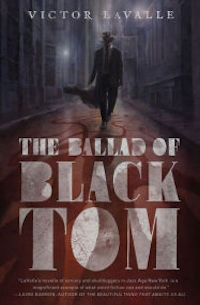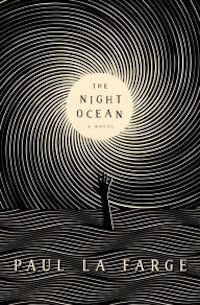Invoking the legacy of H.P. Lovecraft in fiction is 2017 is no easy task. On the one hand, you have his visionary take on horror, which remains influential to a host of writers; on the other, you have his loathsome racism that’s frequently inseparable from the stories he’s telling. A handful of nods to the Cthulhu Mythos in a story or novel can sometimes feel less like a warm homage and more of an oversight regarding the more noxious aspects of his body of work.
Some of the work that’s followed in Lovecraft’s footsteps hits many of the same terrifying beats, but opts for a very different sort of worldbuilding: expansive cosmic horror, but of a variety that isn’t beholden to a structure of racist or classist beliefs or spurious theories of racial or ethnic superiority. (I wrote about this in greater detail a few years ago.) Others opt for a different tactic: dealing head-on with Lovecraft’s racism while still finding a way to tap into the profoundly unsettling sense of horror and dread that he conveyed in his work. Last year, two of the most memorable cosmic horror books I read represented each camp: John Langan’s The Fisherman in the former, and Victor LaValle’s The Ballad of Black Tom in the latter.
 The case of LaValle’s book is instructive for how it hits the expected Lovecraftian story beats while also wholeheartedly criticizing Lovecraft’s racism. In his novella, there are mysterious mystical tomes, secret societies, corrupt public officials, and a central figure looking to gather unearthly power and venture into other dimensions. But the novel also deals with questions of race in 1920s New York City—both by offering a vibrant counterpoint to Lovecraft’s dim views of a multicultural society and, more specifically, by building the story around a black protagonist. And it works on all levels, and showcases a way of folding Lovecraftian elements into a horror story without ignoring the bleaker and troubling side of his work.
The case of LaValle’s book is instructive for how it hits the expected Lovecraftian story beats while also wholeheartedly criticizing Lovecraft’s racism. In his novella, there are mysterious mystical tomes, secret societies, corrupt public officials, and a central figure looking to gather unearthly power and venture into other dimensions. But the novel also deals with questions of race in 1920s New York City—both by offering a vibrant counterpoint to Lovecraft’s dim views of a multicultural society and, more specifically, by building the story around a black protagonist. And it works on all levels, and showcases a way of folding Lovecraftian elements into a horror story without ignoring the bleaker and troubling side of his work.
LaValle isn’t alone in finding ways to revisit Lovecraft’s work while confronting and challenging his racist worldview. As its title suggests, there are mentions aplenty of Lovecraft to be found in Matt Ruff’s novel Lovecraft Country. But in this book, that invocation works on a few levels. There are mysterious societies, otherworldly creatures, and terrifying rituals in abundance here, as well as a setting that’s one letter removed from Lovecraft’s fictional town of Arkham. Lovecraft’s fiction is specifically invoked: protagonist Atticus, a black Korean War veteran, recalls enjoying one of his books before discovering more work from its author that was much more racist. Here, then, the use of the author’s name becomes metaphorical: “Lovecraft Country” as a kind of shorthand for regions where supernatural creatures and mundane racism pose equal dangers.
 Ruff’s novel contains a host of other references to Lovecraft—at one point, Atticus and the book’s antagonist, Caleb Braithwaite, debate the proper translation of a book written in a mysterious language. Atticus notes that its title seems to correspond to the Necronomicon. “That would be a book of dead names,” Caleb responds. “The Book of Names is just the opposite. Its subject is life. Transformation. Genesis.”
Ruff’s novel contains a host of other references to Lovecraft—at one point, Atticus and the book’s antagonist, Caleb Braithwaite, debate the proper translation of a book written in a mysterious language. Atticus notes that its title seems to correspond to the Necronomicon. “That would be a book of dead names,” Caleb responds. “The Book of Names is just the opposite. Its subject is life. Transformation. Genesis.”
And that last word is no coincidence: Atticus and Caleb share a common ancestor from many generations earlier, and their relationship has echoes of another pair of relatives whose names begin with the letters “A” and “C.” For all that there’s plenty of Lovecraftian menace in Ruff’s novel, there are also more than a few other loving nods to other works of science fiction and horror from bygone years: one character is the creator of a number of pulp adventure comics, and several of the book’s heroes are avid science fiction readers. And the resulting novel avoids a sense of pastiche and adds a fair amount of spontaneity to the proceedings.
Paul La Farge’s novel The Night Ocean also concerns itself with H.P. Lovecraft, but it employs a very different technique by making the real-life author a central figure in the narrative. It begins in a way that feels archetypal for a certain type of horror story: Marina Willett, the book’s narrator, begins by recounting the circumstances under which her husband Charlie disappeared, after a period of seeming mental instability. There’s a bizarre image involved, and a rumor of a death without a body—but the twists and turns that this narrative takes have less to do with eldritch terrors from other dimensions and more to do with deceptions, nestled narratives, and shifting identities. The terrors here are subtler ones.
 Marina is a doctor by profession, and stands as a bastion of reliability, whereas nearly everyone else in the novel is a writer, philosopher, or a pulp enthusiast–and thus far more connected to fiction, speculation, and deception. The novel takes on an increasingly nestled structure: Marina’s story involves retelling the story that Charlie became obsessed with, which involves a rumored diary of H.P. Lovecraft, which in turn leads to the question of whether Lovecraft had an affair with Robert Barlow, who was later named his literary executor. (And if the story of Lovecraft’s connection to Barlow and Barlow’s subsequent life—in which his path crossed with another contentious American literary figure—sounds too strange to be true, it’s not.)
Marina is a doctor by profession, and stands as a bastion of reliability, whereas nearly everyone else in the novel is a writer, philosopher, or a pulp enthusiast–and thus far more connected to fiction, speculation, and deception. The novel takes on an increasingly nestled structure: Marina’s story involves retelling the story that Charlie became obsessed with, which involves a rumored diary of H.P. Lovecraft, which in turn leads to the question of whether Lovecraft had an affair with Robert Barlow, who was later named his literary executor. (And if the story of Lovecraft’s connection to Barlow and Barlow’s subsequent life—in which his path crossed with another contentious American literary figure—sounds too strange to be true, it’s not.)
The plot gets even more intricate from there; The Night Ocean may be the only novel in which both Ursula K. Le Guin and Whittaker Chambers have cameos. As does real-life Lovecraft scholar S. T. Joshi, whose meeting with Charlie sets much of the plot in motion. Joshi’s appearance is one of several references made over the course of the book to various communities of science fiction, fantasy, and horror readers and writers. Without giving too much away, it turns out that some of the nestled narratives that Marina uncovers contradict one another. This is, clearly, a danger when dealing with a host of writers: some of them may well end up making things up.
It’s a fascinating way to evoke one of the predominant sensations of cosmic horror: namely, that sense of insignificance in a universe where certain rules in which you believed no longer hold true, or (perhaps) even existed to begin with. La Farge has written a largely realistic novel that evokes a Lovecraftian sense of dread, but there isn’t a shoggoth in sight. And in the bold narrative architecture that he’s established, there are plenty of lessons to learn in how to reference the emotional impact of cosmic horror in narratives that are somewhat removed from it.
 Tobias Carroll is the managing editor of Vol.1 Brooklyn. He is the author of the short story collection Transitory (Civil Coping Mechanisms) and the novel Reel (Rare Bird Books).
Tobias Carroll is the managing editor of Vol.1 Brooklyn. He is the author of the short story collection Transitory (Civil Coping Mechanisms) and the novel Reel (Rare Bird Books).










